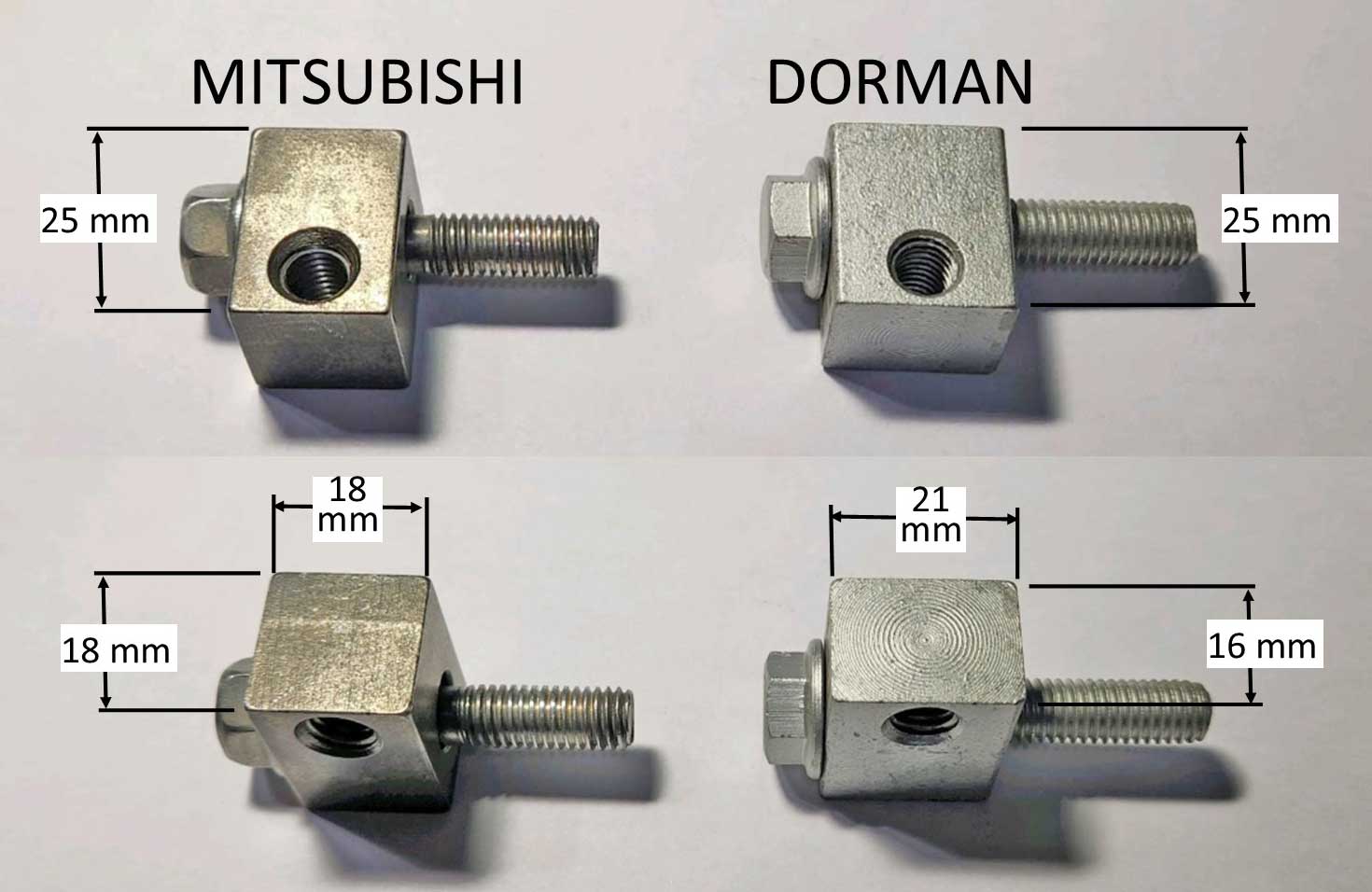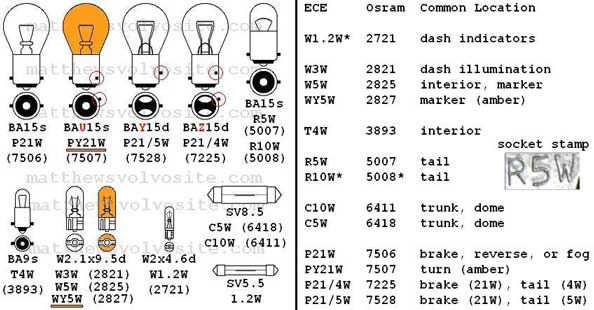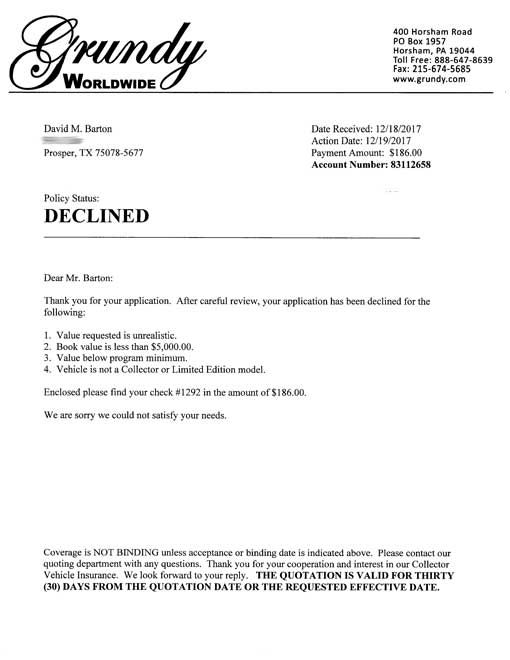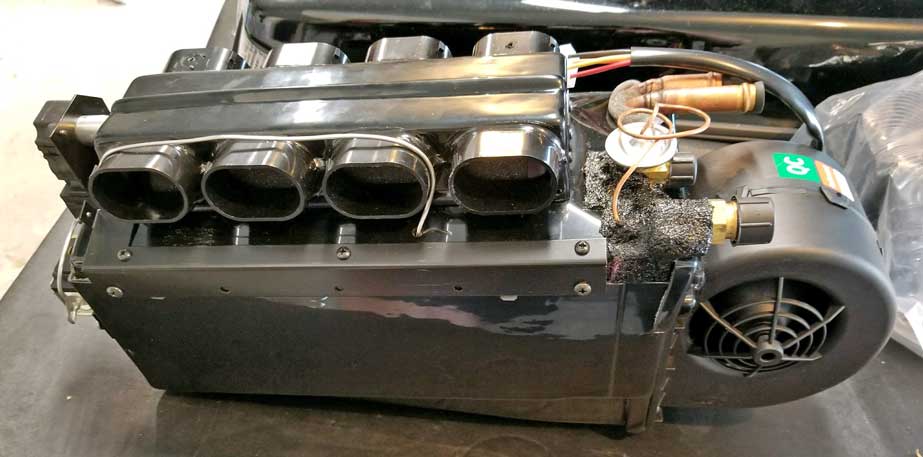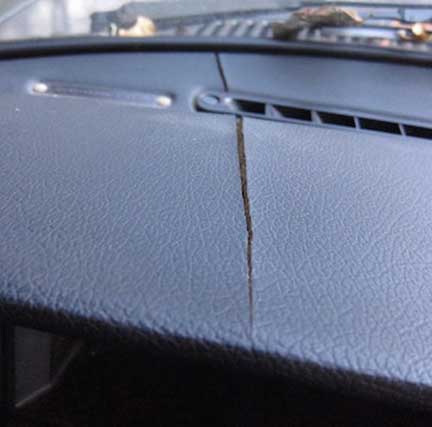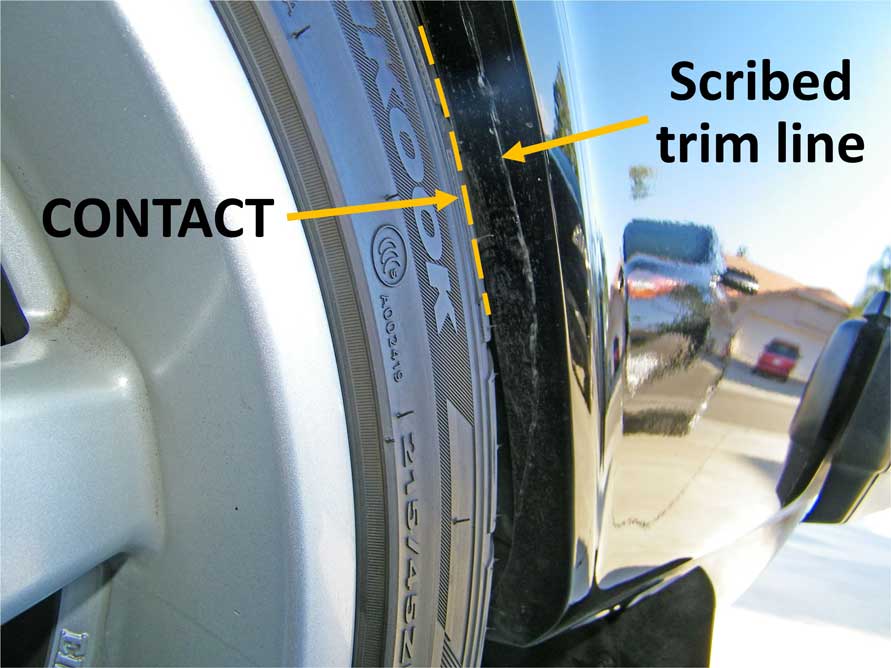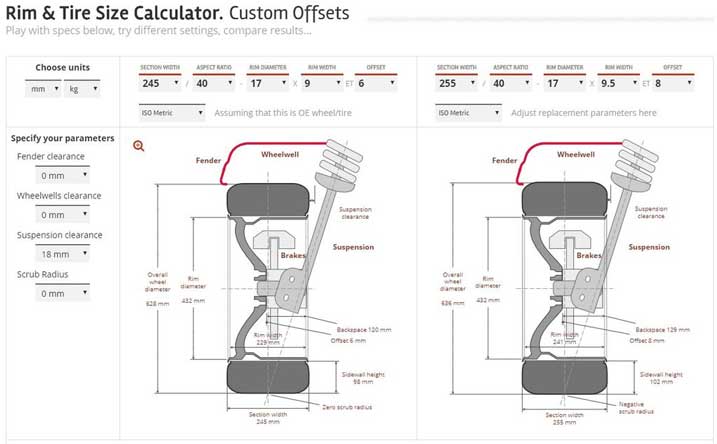2 4 0 T U R B O . C O M
D A V E ' S V O L V O P A G E
| The 240 FIX PAGE A bunch of FIXES and MODS to keep you sane and properly entertained. |

|
UPDATED: November 23, 2025
CONTACT

|
D
O M A I N S

 |
|||
 |
 |
 |
 |
 |
 |
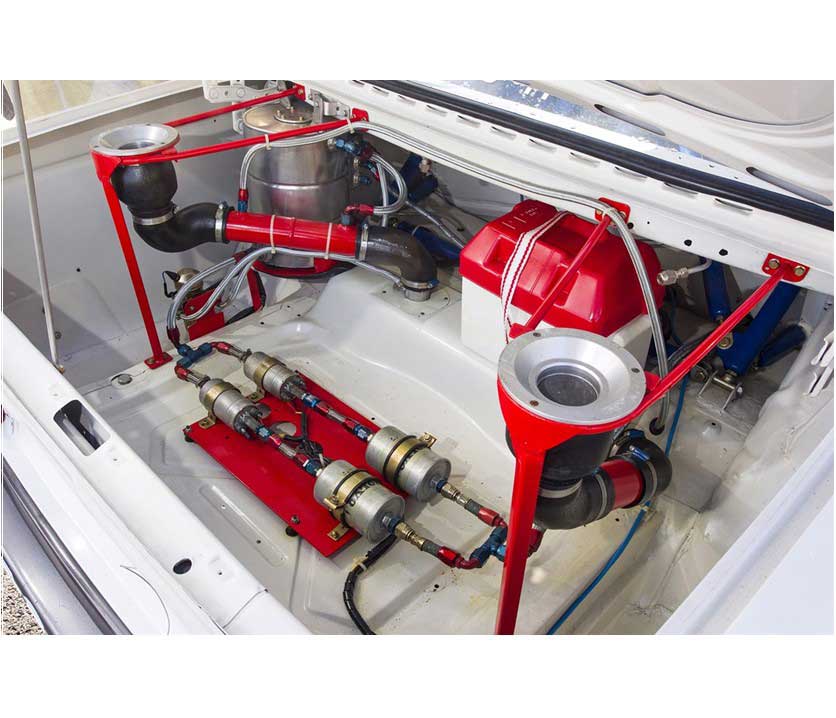 |
 |

|
 |
 |

|

|
|
 |
 |
 |

|
|
 |
 |
 |

|
 |
 |
 |
 |
 |
 |
 |
 |
 |
 |
 |
 |

|

|
 |
 |

|
 |
 |
 |
 |
 |
 I like 240s a lot and there's nothing I like better than modifying them for performance, handling, comfort, etc. In this page I have outlined some cool mods I have done to my 240s and others that have been provided by other 240 enthusiasts. Your comments are welcome: CONTACT |
IGNITION (key) SWITCH Info
| Inside info on 240 Ignition Switches. CLICK HERE FOR INFO IN MY IGNITION PAGE  |
(CPS) Crank Postion Sensor Fitting
to an Earlier Engine
| MODIFICATION INFO for adding a CPS bracket to an earlier redblock. CLICK HERE FOR INFO IN MY CONVERSION HARNESS PAGE    |
ALTERNATOR and ALTERNATOR MOD Page
|
Alternator Idler Pulley Project
to eliminate belt slip with a high output alternator.
Click this photo. |
Vacuum Pump Project
to Improve LOW Brake Booster Vacuum.
This isn't for everyone, but if your engine has lower vacuum and you need that vacuum for your brake booster, check out this vacuum pump project in my 240 Brake Page. 240turbo.com/vacuumpump |
More Accurate Volt Meter Project
If you're like me and don't care for a less than accurate VOLT GAUGE, then check out this project.  240turbo.com/voltmeter |
SECURING your
B230 CRANKSHAFT DAMPER and TIMING GEAR
| If you're
performance-built B230 is important to you, you need to keep
these modifications in mind. These mods outlined below will not make it
faster, but they may save your engine from serious damage. This first suggestion is designed to prevent the epidemic of crank pulley bolts coming loose when they should not. If you're paranoid about that bolt coming loose, I think THIS WILL BRING SOME CALM. This is a B230 Lock Tab Plate. It's designed to be installed under the B230 crank bolt head.  I designed this Lock Tab Plate to illustrate a way prevent unwanted loosening of that bolt. Lock Tab Plates are now available below.   I wanted some of these tab locks for myself, so I had a small batch made in 22 gauge stainless steel. If you're interested, I had some extras made which are available. The weight of one of these is about 5 grams, so if you're concerned about imbalance, the long arm weighs about a gram, which is pretty insignificant. If you're the one who obsesses over a gram, you can install two of these 180 degrees apart. Click to View Cart or Check Out. Canada or International Shipping: Please Select Shipping and click "Add to Cart" Click to View Cart or Check Out. Your comments are welcome: CONTACT NEXT ISSUE: Failure of stock B230 crank timing gear. Usually due to crank bolt being loose or improperly torqued.  The standard crank timing sprocket for a B230 is made using an inexpensive cast or powdered metal manufacturing process, so they're fragile. The small locating nub shown above rests in the crankshaft groove when installed. This nub is a weak point and it's prone to shearing off. If that happens, that will create all sorts of havoc. In many cases, this failure was preceded by (probably caused by) the loosening of the CRANK DAMPER BOLT. So this is a problem which might be fixed by just KEEPING YOUR BOLT FROM LOOSENING. It's also believed by some that the nub can become damaged from abuse when fitting or removing it, in part from the use of an IMPACT WRENCH, or if you are not using a proper DAMPER HOLDING TOOL (below) to keep the the damper stable when removing or torquing the crank bolt. 
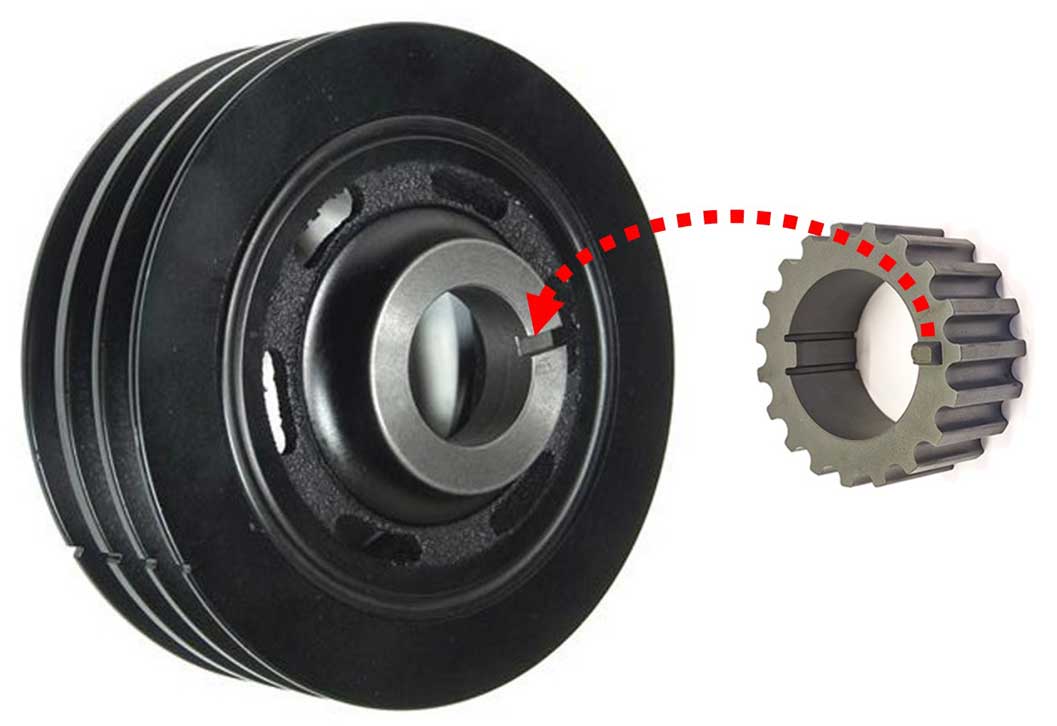
If you're wondering why this sprocket has another raised nub shown above, it's made that way so the sprocket mates with the slot on the back of the crank damper. BILLET STEEL CRANK SPROCKET 
This is the Billet Steel B230 crank sprocket (round tooth) available from Yoshifab. It comes with a locating key. A billet sprocket is considerably stronger than a stock one, but it can still experience some damage or it can cause engine damage if your crank bolt comes loose. I know of one instance where this happened to a billet sprocket and the main damage happened to the key only, but the sprocket was still usable. The valves in the 16 valve head, however, were toast. So a billet crank sprocket is a nice addition that adds a higher level of protection for your expensive engine, especially if you have a 16 valve head, because the crank gear is under more stress with an extra cam sprocket up top. SOURCES: yoshifab.com/billet-steel-crank-gear.html https://www.speedingparts.com PINNING THE CRANK NOSE TO THE SPROCKET AND DAMPER. This is an OPTION. It's not required, but this is a well known solution for a performance engine which will add to the security of the damper pulley and timing sprocket. Doing this with a STOCK TIMING SPROCKET would probably be just fine too if you don't have a billet steel one. It's not as difficult as it sounds and this procedure can be done using pretty normal tools. These images below are useful screen-shots from the below video so you can see a few close-ups of what's being done. 


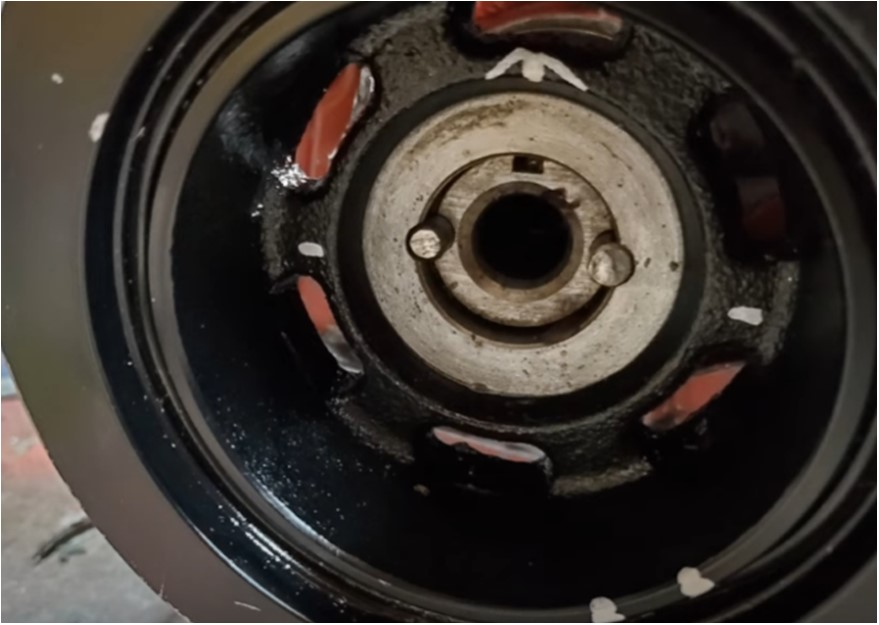

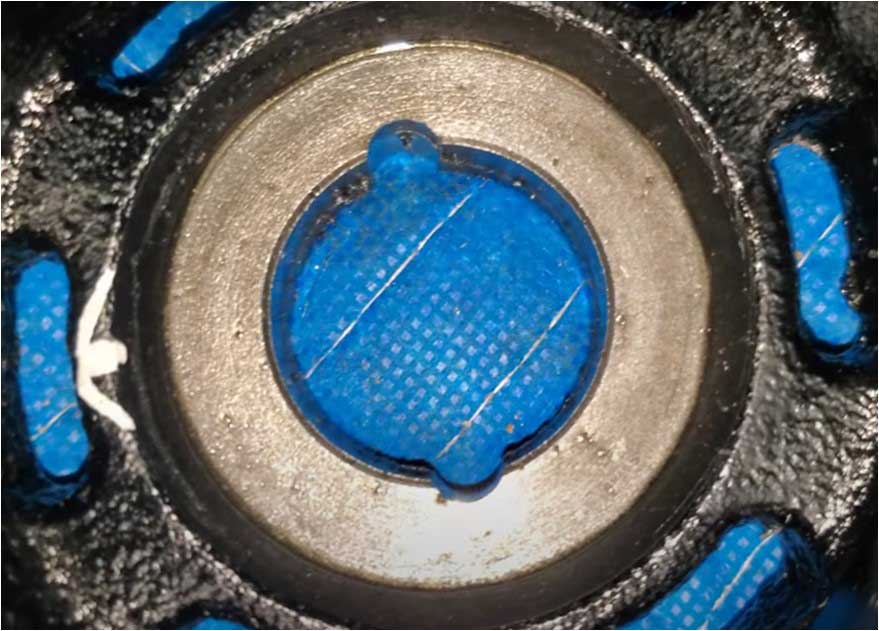 No one sells a crank pin kit specifically for a Volvo engine (like they do for many other engines). The below video is showing how this is done using what you can find easily. Steel dowel pins can be found in many sizes and lengths. You might try 1/4 inch x 1 inch long (25.4 mm) or 1.25 inch long (31.75 mm). You can always grind a pin down to make it shorter if you have a bench grinder or a rotary cutter. In this video he began with a 1/4 inch pin size, but later changed to 5/16 inch pin. No reason was given. 1/4 inch is just fine. The holes are drilled 35 mm apart on center in the fat washer as shown in the below image. This is because the nose of the crankshaft is 35 mm in diameter and you want the pins partially in the crankshaft and partly in the damper. The Volvo damper pulley is 17 mm thick, so the pin needs to be longer than 17 mm (0.67 inch) so that it goes into the sprocket. Using a 1 inch long pin means at least 6.4 mm of the pin will be in the sprocket. Using a 1.25 inch long pin means at least 14.75 mm will be in the sprocket. This video doesn't say how long the pins he used were, but it looks like they ended up to be somewhere between 1 to 1.25 inch long after he ground them down to be flush with the front of the damper pulley. They need to be flush so they will be behind the fat crank bolt washer.  The drill size used will be the same size as the pin. In case you need info on the large crank bolt, it's threaded M14 x 2, 70 mm in length, with a 24 mm bolt head. It's PN 963319 available from iPd. The large, fat washer is PN 1336822, also available from iPd. Bolt torque specification for B230: 1st Stage: 45 ft.lbs. (60 Nm). Second Stage: Tighten 60 Degrees. VIDEO: Volvo Crank Damper Pinning. https://www.youtube.com/watch?v=Pi4cOqB8sDk This crank pinning operation adds another nice level of security, but still, it doesn't stop a crank bolt from coming loose. So I definitely recommend also doing the FIRST recommendation above. Your comments are welcome: CONTACT |
Choosing an Appropriate Air Filter Size
 If you're adding a modified air filter, it would be good to know if the filter you're choosing is large enough to suck in enough air for your engine. Most air filter companies don't tell you what CFM their filters are capable of, so here's how you can find out. First you can determine how much airflow your engine needs. Here's an online calculator. https://strikeengine.com/air-filter-size-calculator-for-power-bhp/ For example, if you enter a 2.3 liter engine with 300 HP revving to 6000 RPM, you find your engine uses up to 367 CFM. Then you can go shopping for an air filter and you can use this info below: Pleated K&N filter material will flow 6.03 cfm of air per square inch. By comparison, a single square inch of the highest flowing paper will allow 4.95 cfm of air to pass and the freest flowing foam will flow 4.38 cfm. Use the formula below to compute the minimum size filter required for your particular application. The usable portion of the filter is called the EFFECTIVE FILTERING AREA which is determined by multiplying the diameter of the filter times Pi (3.1416) times the height of the air filter in inches, then subtracting .75-inch. We subtract .75-inch to compensate for the rubber seals on each end of the element and the filter material near them since very little air flows through this area. SOURCE: www.quadratec.com/air-filter-facts 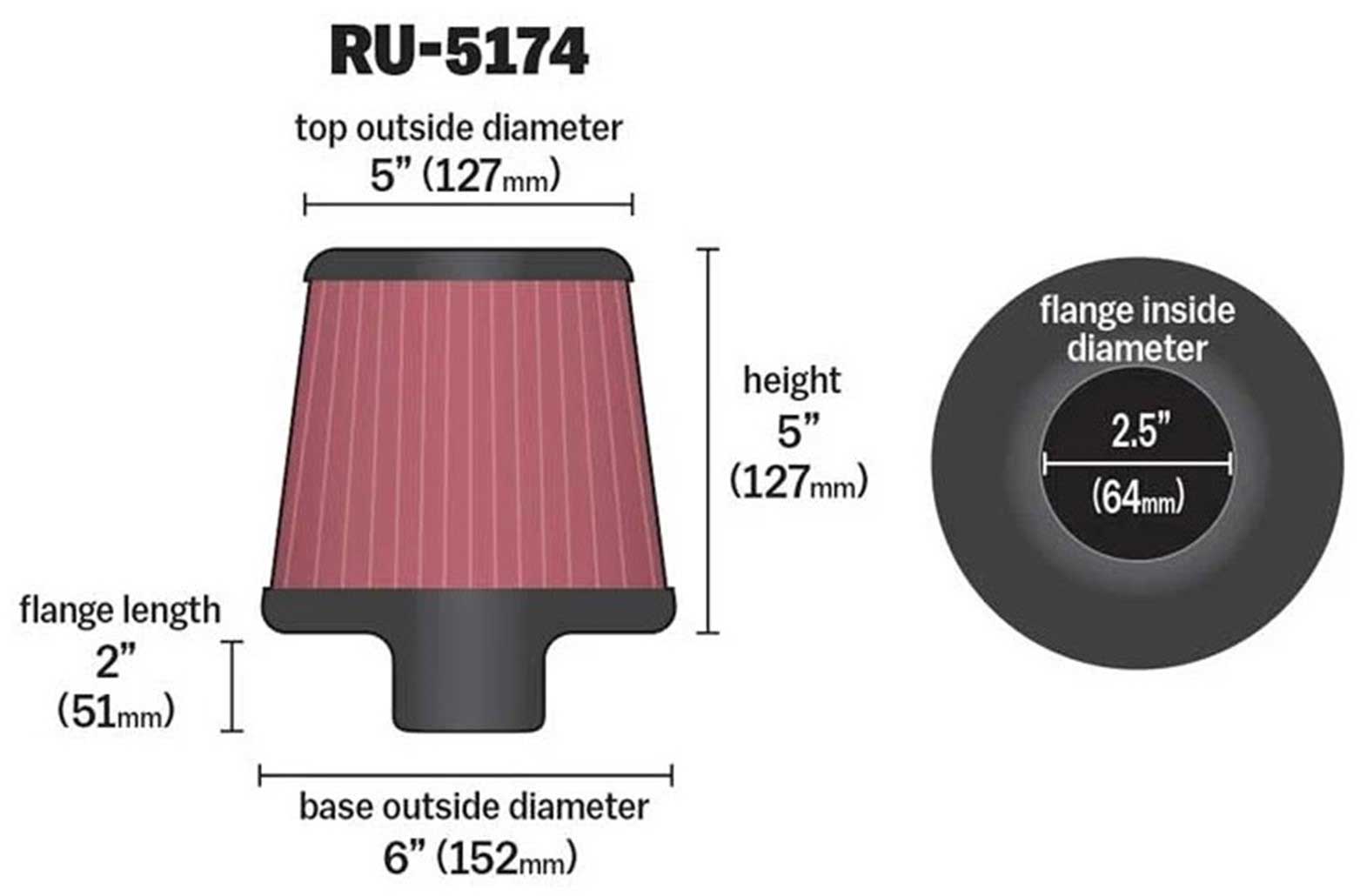 So if we look at this K&N filter above (PN RU-5174), we can use an average diameter of about 5.5 inches and a usable filter length of about 4.25 inches. This comes to about 74 cubic inches. Multiply this by 6.03 CFM and you get 440 CFM. This filter will probably be just enough. If you're not comfortable with the CFM limit being that close, keep shopping for a larger filter. 
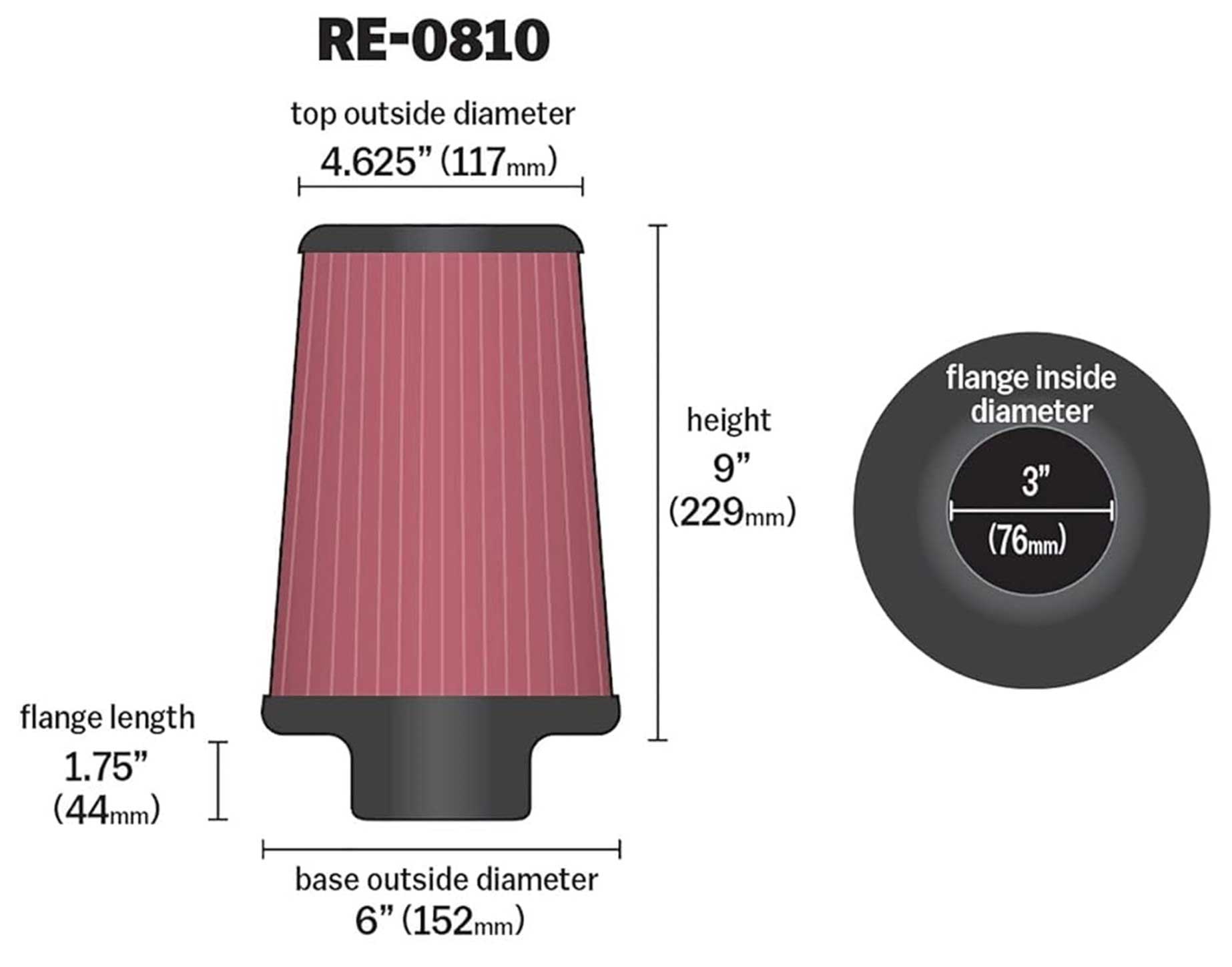 For example, if we looked at this K&N RE-930 above, it offers 87 cubic inches and up to 524 CFM. Or this K&N RE-810 above offers 137 cubic inches and up to 830 CFM. |
ENGINE MOUNT OPTIONS
| Engine
mounts are kind of important. I think there should be more discussion about better options, don't YOU? I made a new page showing some of my ideas about better options for high-performance engine mounts. 
https://www.240turbo.com/enginemounts.html |
FUEL INJECTOR DIAGNOSTICS
| I get this kind of question often, so I'm putting together some info here on diagnosing your EFI fuel injector c
ircuits. For this example I'll be referring to LH 2.4 circuits, but this same info generally applies to LH 2.2. Go to my Harness page where I have my collection of EFI Pin Function Diagrams: prancingmoose.com/volvoharnesses#pinfunctions For this example I'll be opening the PDF called: 1989-93 240 B230F LH 2.4. 1. Looking at page 2, see the
Bk-R wire from the fuel relay? Try testing it to make sure it shows power when cranking the engine. If it has power, keep going.
2. That same Bk-R wire also powers the injectors. Can you see that in the diagram? Check for that wire in an injector plug so you know which terminal it is. Check it for power when cranking. If it has power keep going. This means you have power to your injectors. You're halfway there. 3. You’ll need an injector noid tool or LED test light to check if you’re getting an ECU signal to the injector plug. This comes through the Gn-W wire from ECU terminal 18 to your injector plug. This video explains that:
A noid tool can be found by searching “bosch Jetronic EV1 noid tool”.
It’s an LED that can be plugged into the injector plug (EV1 style
plug). If it flashes when cranking the engine you know the ECU is
sending the signal.
That video also gives you an option to use a test light. It should be an LED test light, since a normal incandescent bulb light can risk damage to the ECU. The guy in the video is using a normal test light. It's not recommended, but in an emergency you do what you can. |
Potential Aftermarket DEFECTIVE SENSOR WARNING
 LH-2.4 TEMPERATURE SENSOR 1346030
LH-2.4 TEMPERATURE SENSOR 1346030This is the Fuel Injection Temp Sensor for LH 2.4 or 3.1, Volvo PN 1346030. Bosch PN 0280130032. THREADS: M12-1.5. This is the Engine Coolant Temp (ECT) sensor that any Volvo LH 2.4 or 3.1 or Regina equipped car will use. Other car interchange info for this sensor: https://www.autohausaz.com/pn/UR-1346030 The original BOSCH part number 0 280 130 032 can be seen engraved on an Original BOSCH sensor (below).
This original Bosch sensor is not always easy to find new. And it's a lot more expensive than aftermarket ones. When searching, try using Volvo PN 1346030 in your search. An AFTERMARKET sensor might have a different manufacturer name or part number engraved on it or it might have no info. |
|
POTENTIAL DEFECTIVE AFTERMARKET SENSOR WARNING: I'm not suggesting these are all bad, but if you have one, I would TEST it BEFORE using. Be aware that some aftermarket LH 2.4 temp sensors have been found defective. I have no idea if this is a wide problem or not. I put this info together after a customer of mine told me he got THREE defective sensors in a row from two different new parts sellers. URO PN 1346030 or URO PN 001251 and some other no-name brands, such as one from Rock Auto with PN 3C M/19G (photos below). The Uro branded sensor is on the left. The Rock Auto sensor is on the right. Both of these sensors below were found to be BAD with NO RESISTANCE READING between a pin and ground. Weird, huh?. 
 HOW TO TEST THIS SENSOR: Check the resistance level between a sensor pin and GROUND. If you have an aftermarket sensor for LH 2.4 and find NO RESISTANCE READINGS between one of the connector pins and the sensor body (ground), the sensor will not operate properly. Testing this way should normally reveal resistance readings (details below). The typical problems you'll see if you're using a bad sensor can include poor cold starts and poor MPG. IMPORTANT: Do not test any LH 2.4 temp sensor by checking resistance between the two pins. That is NOT how this sensor is tested. Many people have made this error. If you encounter one of these new DEFECTIVE SENSORS, or if you have any comments to offer, please feel free to email me. CONTACT I had an email exchange with ONE of the new part suppliers (where two of the bad URO sensors came from) and they did some random checks of their stock and couldn't find a problem. I put this info here in early 2024 and so far no one else has mentioned this problem(?). |
| Hella Brand Sensor 1346030 I got an email from Nick L, who found a BRAND NEW Hella brand sensor to be defective. Nick was dealing with some rough cold starts in a 1991 740, where he had to turn over the engine for almost 10 seconds before it would begin to fire. It reminded him of the first time he had replaced a bad FAE brand ECT sensor a year earlier that a previous owner installed. He couldn't believe that a brand new sensor had already gone bad. This was a Hella brand sensor from FCP. When measuring the sensor at a moderate warm ambient temperature, it seemed to have good resistance. He decided to replace it with a Bosch part and it resolved the issue. Nick later tested the Hella sensor and at first it seemed fine, but he decided to put it in a cup of ice water to simulate some lower temperatures. The resistance on the first pin was fine, but when he checked the second pin there was no resistance at all. Warming it back up with tap water brought back normal functionality to the second pin, and another ice bath removed functionality again. Nick said the faulty pin seemed to lose all resistance readings right around 4.8 Kohms (kilo-ohms).   This stamped info appears to be 6PT 009 107-50. Made in Spain 0623. |
| HOW THIS SENSOR IS DESIGNED TO WORK: An LH 2.4 temp sensor has two connector pins. Each pin uses internal resistance to vary the ohm output between the pin and ground. There are TWO resistors inside this sensor, both identical. Each resistor is connected to one pin. The other end of each resistor is also connected to the sensor body (GROUND). So then each pin provides a separate, but identical resistance output relative to the temp reading. One output goes to the Fuel Injection ECU and one goes to the Ignition ICU. 
Each pin will have identical ohm output in relation to resistance between the pin and sensor ground. |
Image below is from TP32053 LH 2.4, 3.1, EZ 116K Fault Tracing, page 27. If
you're curious about appropriate resistance test measurements for this sensor,
here it is.  Resistance readings should be taken between PIN 1 and Sensor body (GROUND) or Pin 2 and sensor body (GROUND). Note that this test is a different method than for testing an LH 2.2 sensor: SOURCE: turbobricks.com/lh2-4-sensor.228130. So it's important to remember to NOT test an LH 2.4 ECT sensor by measuring resistance BETWEEN THE TWO PINS. And any OHMS test should be done with the sensor NOT connected to the ECU or any other circuit. Temp - Resistance -10 C (14 F) - 8260-10560 Ohms (8.26-10.56 kOhms) +20 C (68 F) - 2280-2720 Ohms (2.28-2.72 kOhms) +80 C (176 F) - 290-364 Ohms (0.290-0.364 kOhms) |
BRUSHLESS COOLING FAN PAGE
New page dedicated to
BRUSHLESS cooling fans
|
DIY CURVED Rubber Hoses
To use for i
dle hoses, power steering returns, coolant, etc.  If you have a 240 (or other car) with curved or molded rubber hoses under the hood and you cannot find replacements, here's a DIY method for molding rubber hoses to your own custom shape. https://www.youtube.com/watch?v=FFDlGPLcK0o And another method you can look at. https://www.youtube.com/watch?v=br2zctTF2uQ |
240 Power Steering Pump Belt Tensioner
242 Powered Rear Vent Window Project
| in
2022 I completed the installation of power vent window actuators for my
242 rear vent windows. I had been thinking of ways to do this for many
years. You can see that project at: https://www.240turbo.com/ventwindow.html  Also 242 C-Pillar Project Page In addition to the above vent window project, I also made new C-pillar panels, because the old ones were not useable. That page can be found at: https://www.240turbo.com/242cpillar.html |
Aligning your TIMING BELT Correctly
| Installing a new timing belt on your B21, B23 or B230
is not an ultra-challenging task, but if you're not experienced, it's
good to have some useful reference info to keep from making mistakes. The last thing you need is WRONG INFO (image shown below), which I have seen in MANY technical manuals (including Haynes) and in many online images. The LEFT image below is WRONG! So if you see it wrong like that in a manual or on-line page, don't use it!  Here are some more images below you might find useful. B21 or B23 NOTE: If you need the size of the big crankshaft bolt, it's M14-2.0 x 90 mm long, grade 10.9. It has a 22 mm bolt head. Volvo PN 970933.  


  B230 
  In case you need info on the large crank bolt for a B230, it's threaded M14 x 2, 70 mm in length, with a 24 mm bolt head. It's Volvo PN 963319 available from iPd. The large, fat crank washer is PN 1336822, also available from iPd. And if you need a good video on replacing your timing belt, iPd made one. https://www.youtube.com/watch?v=7eIFWUbSZTw This video is specific to the later 240 with B230F. https://www.youtube.com/watch?v=APXKlGO1xeE |
BANJO (CRUSH) WASHERS versus BONDED SEAL WASHERS
Old School vs. New School.

 If you have owned a Volvo that uses BANJO FITTINGS and copper washers, you might have shared my frustration with making them seal well after working on the connections. The factory copper washers, often called crush washers, where made to be "soft" and were designed to be used one time only. Volvo used these copper washers on oil lines, power steering racks, on fuel systems and of course on the OIL PAN drain plug. Being a cheap 240 owner, I would often try re-using these copper washers. Sometimes this resulted in leakage. Sometimes flat-sanding a copper washer would renew the surface, but even a brand new copper washer can leak. This often results in the temptation to OVER-TIGHTEN a fitting or a drain plug, which of course can have a really bad result. Over the years I have also tried aluminum crush washers. This seemed to work about the same. Maybe better, sometimes. Replace the copper washer every time? Do YOU put a brand new washer on when YOU change your oil??? I didn't. I can't count the number of times I've heard about someone over-tightening that drain plug, resulting in stripped threads and a ruined oil pan. BEST FIX EVER METAL-BONDED SEALING WASHERS Then a few years ago I discovered METAL-BONDED SEALING WASHERS. Bonded seal washers have a two-part construction consisting of a structural metal ring and an interference fit rubber seal. When compressed, they create an ultra-tight high-pressure seal. These are commonly installed in high-pressure hydraulic applications with thousands of PSI and they can certainly be used in static sealing locations, such as drain plugs. For those of you who don't want to use "rubber" on your high-pressure oil or fuel hose seals, these can easily be found with Nitrile rubber, also known as NBR or Buna-N, which is impervious to oil or fuel. Here are some sources below. mcmaster.com/metric-bonded-sealing-washers/ discounthydraulichose.com/bonded-seal-buna.html I bought this METRIC assortment below of metal-bonded sealing washers: amazon.com/gp/product/B07CKVYWD4/ 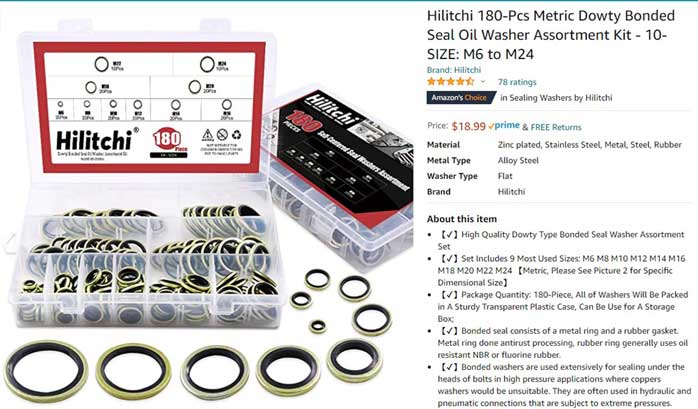 

 I now use these bonded seal washers on my OIL DRAIN PLUG and on my OIL COOLER FITTINGS. The drain plug thread is 3/4-16 and a 20 mm bonded washer fits well. Perfect seal every time and no need to over-tighten, ever. 
 Mike P. from Canada sent me some photos. He changed his fuel filter and had trouble. Trying to get a seal with normal copper washers, he over-tightened it and warped the washer, causing fuel to spray 4 to 5 feet! He then installed metal-bonded seal washers. After tightening snug by hand, he turned the banjo bolt 1/4 turn and got a perfect seal. The Volvo filter used two sizes: 14 mm on the INLET and 12 mm on the OUTLET. |
240 Window Switch Info
| If you need some diagram info for a 240 window switch, see the images below. 242 diagram and 244 diagram. 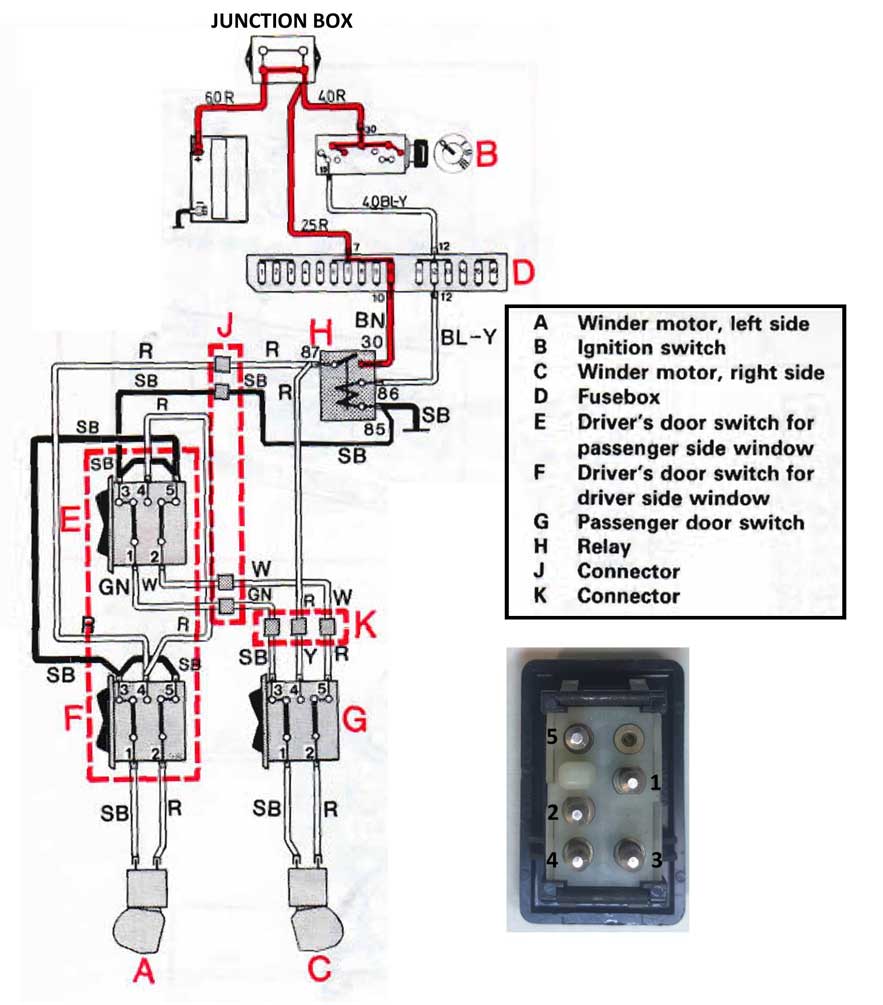
 |
DIY Engine PISTON and HEAD Cleaning Tips
| I had to sh
are this video I found. If you're cleaning an old engine, head, or pistons yourself, here's a great video. https://www.youtube.com/watch?v=kj7C9iUXuRs |
240 Hood Insulation
| Maybe you don't care about 240 hood insulation, but if you do, I've begun compiling some info here just for you. Most 240s did not have any hood insulation. To my knowledge, the first 200 series with factory hood insulation pads were the 260 series (264 and 262C) and also diesel equipped 240s. The first 240 non-diesel to come with the insulation pad was the 240 Turbo (1981 to 1985). After 1986 the 240 hood became NON-insulated once again, until the final year of production in 1993. The 1993 models then came equipped with a new hood insulating pad. Engine heat and moisture would eventually damage these factory pads and make them pretty ugly. 

 

 In years past iPd offered their own aftermarket hood insulation kits for the 240, as shown below. These were pre-cut adhesive backed foam inserts which had a foil lining for heat protection. These are no longer available 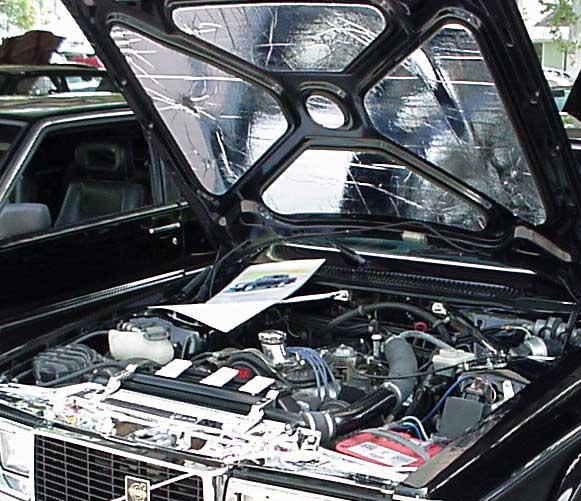
 DIY PROJECTS: For those of you interested in making your own insulation pieces, I'll go over what I've done below. 
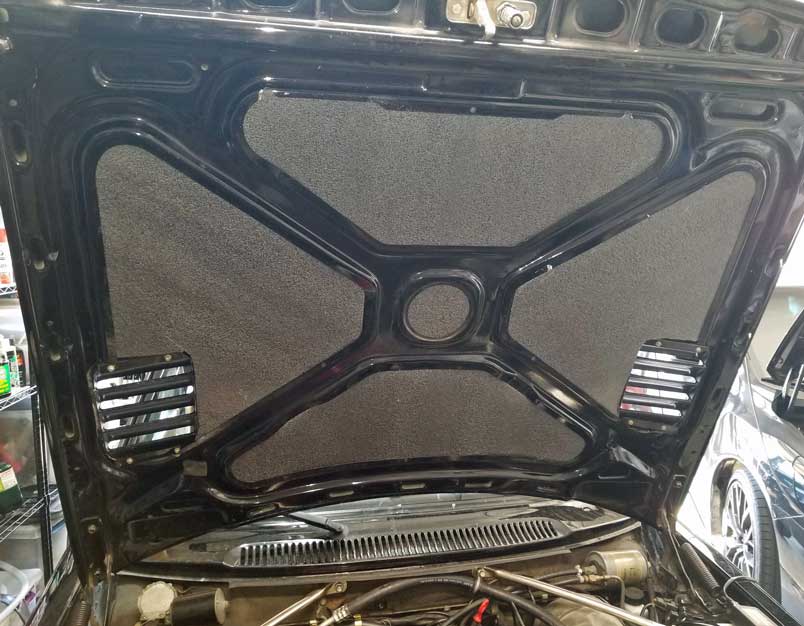 I used foam sheets I bought from McMaster Carr. Specific examples are shown below. 1/2 inch thick foam works well. Both examples above were cut so they tucked under the hood brace. Cutting foam can be done with scissors. None of the foams I have used had adhesive backing, but that's an option you can explore on your own if you like. The WHITE HOOD shown above was done many years ago with OPEN CELL foam (first option below PN 8614K83). It will usually be found in a GRAY color, but it can be painted black with acrylic paint if needed. It helps at lot to make a template out of paper or cardboard first and make sure that fits. Then cut the foam. If you use very soft foam and it later begins to droop in the center, I suggest putting some contact adhesive behind it. The first OPEN CELL foam option below held up to engine heat for many years, but it will eventually begin to dry out and then deteriorate after probably more than 10 years. The flame-retardant option below might be better, but I haven't tried it.  The ABOVE two items from McMaster Carr are decent choices if you decide to try OPEN CELL foam. If you choose the flame retardant foam, PN 86115K31, 3 feet (x 54 inches wide) will be enough to do one hood. CLOSED CELL FOAM The BLACK HOOD shown above was done more recently with CLOSED CELL foam, which will probably be a better choice for durability. Foams like this will usually be found in a BLACK or GRAY color. This one below was supposed to be BLACK, but it was actually a DARK GRAY when it came. This foam can be painted black with acrylic paint if needed.  This option above (Ionomer Foam, PN 86205K93) is the one I used more recently on the black hood shown above. Even though it's called "SOFT", it turned out to be very rigid and it's a little tough to bend and force behind the hood bracing, but it can be done as seen in my photo. TWO 24 x 36 inch pieces will be needed to do one hood. Closed Cell option #2  This second option above (Buna-N Foam) will be a better choice if you want it to be flame retardant. For the installation to go easier, I recommend choosing the Extra Soft, PN 85175K59, or Ultra Soft, PN 85175K29. 3 feet (x 54 inches wide) will be enough to do one hood. Other people have used insulating foam made specifically for car hoods or interiors, such as Fat Mat, Dynamat, etc. These may be more expensive. I have no experience using these products on a hood. |
HEADLIGHT PROTECTION FILM
| for your rare or expensive lenses, click below for info in my Headlight Page. https://www.240turbo.com/headlight.html#laminx  |
240 Exhaust Mods
Click here for the 240 Exhaust Page |
Get Variable Interval Wipers for your 240

CLICK HERE for the 240 WIPERS PAGE |
MSD Ignition Spark Improvement for your 240 Turbo
 CLICK HERE for the 240 IGNITION PAGE |
Build your own custom 240 Spark Plug Cables
CLICK HERE OR CLICK THE IMAGE |
240 VIN Decoding Page
CLICK HERE OR CLICK THE IMAGE |
240 Power Mirror and Mirror Switch Page
CLICK HERE or CLICK AN IMAGE BELOW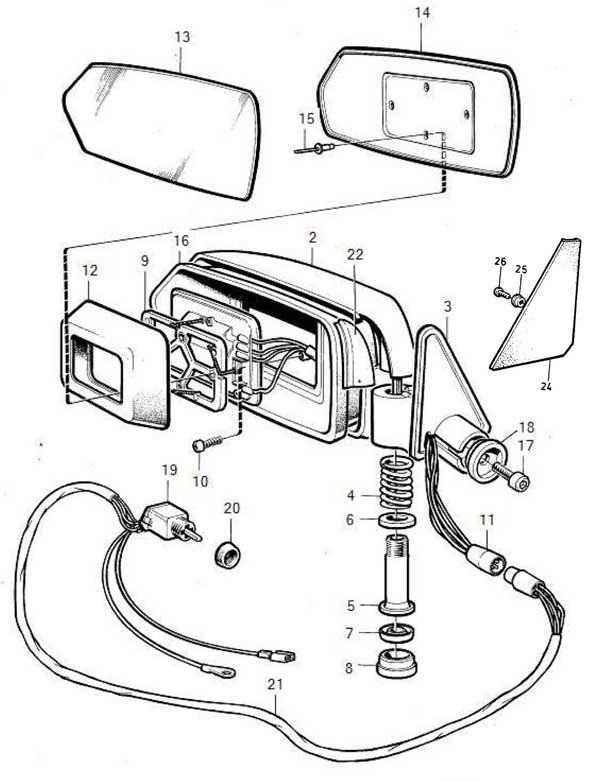
 |
DIY Front End Toe Alignment
Building and using a DIY Trammel Bar
|
240 Fuse Panel Diagrams and Fuse Box Inner Workings

I've created a page all about 240 fuse panels. Lots of details there. https://www.240turbo.com/fusepanel240.html |
Fuel Pump Relay Secrets, Mods and Fixes
|
CLICK A PHOTO ABOVE TO SEE THIS PAGE: Or CLICK HERE. |
240 Dash Top Gauge Pod Project
| Project page for my dash top 3-gauge pod: www.240turbo.com/dashgaugepod.html |
240 Gauge Cluster Mods
A customer sent me some pics of his modified instrument cluster, so I thought I would share.
www.prancingmoose.com/clustermod 
|
Dealing with 240 Smog Emission Compliance
 Since I
lived in California for most of my life, I have plenty of experience
working to make 240s emission compliant. This can be a huge source
of frustration and it can be very expensive if you have to resort to
paying someone every two years to work on the car for you. Since I
lived in California for most of my life, I have plenty of experience
working to make 240s emission compliant. This can be a huge source
of frustration and it can be very expensive if you have to resort to
paying someone every two years to work on the car for you. Don't give up. The below discussions threads are really good ones. It offers a lot of good experience from people who've ultimately been successful and the thread itself is a great success story. turbobricks.com/failed-ca-smog-high-nox-89-240.366734/ turbobricks.com/just-failed-ca-smog-high-nox.349573/ And a great article on this subject (also highlighted in this thread): dailyturismo.com/smog-test-making-it-legal.html |
Improving 240 Gauge and Dash Lighting
CLICK THE IMAGE |
240 Instrument Cluster Diagrams and Gauge Electrical Fixes
|
Here's a growing collection of 240 gauge info that can come in handy if you're
doing your own work on your 240 gauges or instrument cluster.
Click an image or go HERE: www.240turbo.com/240gaugewiring.html |
240 Rear Light Bulbs
|
240 Fog Light or Driving Light Installation
|
Installing Big Cadillac 4-Note Horns in a 240
I did this on my 240.
|
Installation of a Primary Electric Cooling Fan for a 240
|
When in good working
order, the original
belt-driven clutch fan in your 240 can handle most
cooling needs. But if you have been
thinking that your 240 needs an electric primary
cooling fan, here is a page I put together on my
experiences with a number of electric fan
conversions over MANY years, from 1998 to present with small GM
fans, Volvo fans and big Ford or Lincoln fans. Plus I have a
variety of wiring diagrams for building
your own relay fan control systems if you like.
CLICK HERE  |
4-Speed Cooling Fan Controller Project
| (using a LINCOLN MARK VIII fan) In 2016 I got tired of failing "high-tech" fan controllers that would burn up after a year or two. They could not handle a heavy load when trying to control a big Lincoln Mark VIII fan. They always failed in the worst places. So I decided to design and build my own fan controller with FOUR speeds using my knowledge of RELIABLE heavy duty RELAYS. It worked great! The full plans are here. Click here: www.240turbo.com/fanharness.html 
|
AutoCoolGuy PWM Fan Controller Installation
| (for my LINCOLN MARK VIII fan) New addition for My 242 Turbo in 2018. Click here: www.240turbo.com/autocoolguy 
|
WIDGET MAN Brushless Fan Controller Installation
| New addition for My 242 Turbo in 2023. Click here: www.240turbo.com/BrushlessFans.html 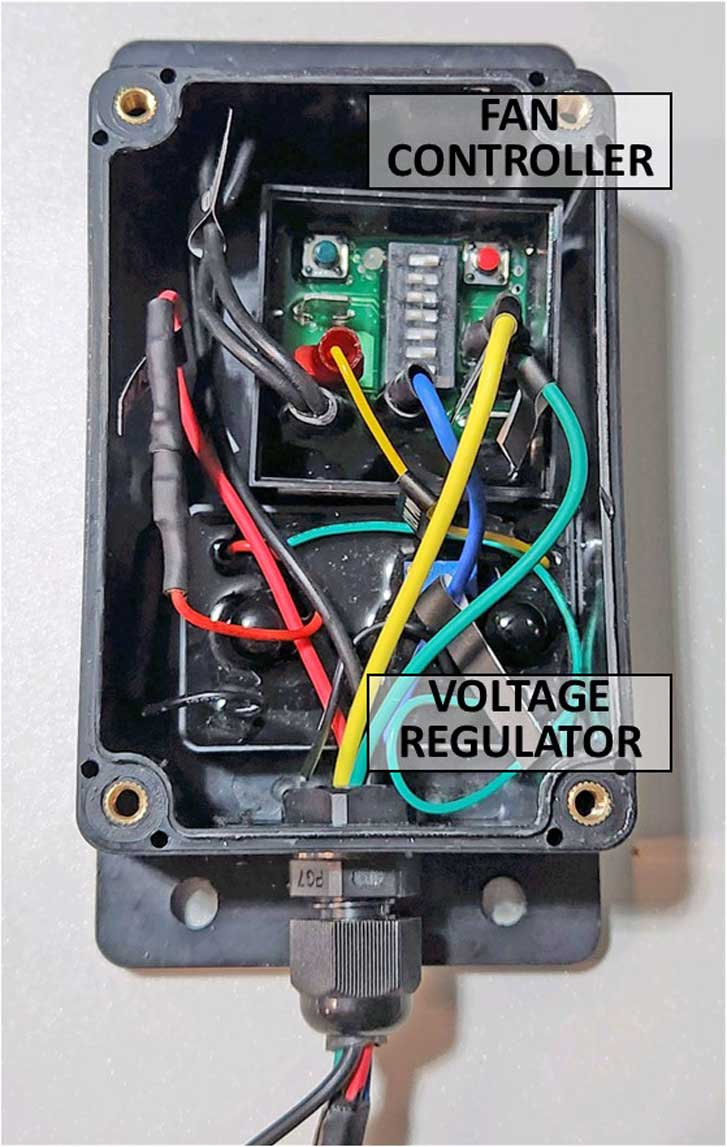 |
Painting 240 Taillamps
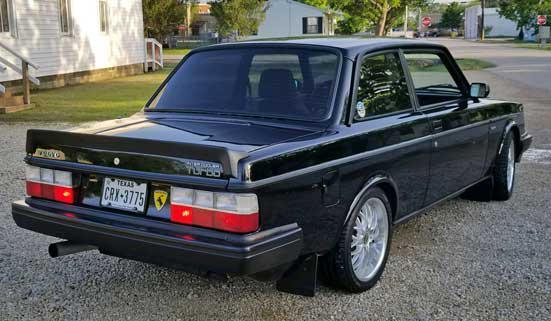  I get questions about the taillights on my car occasionally. I have a 240 TAILLIGHT PAGE where this info can be seen. |
Stepper Idle Air Control Project
 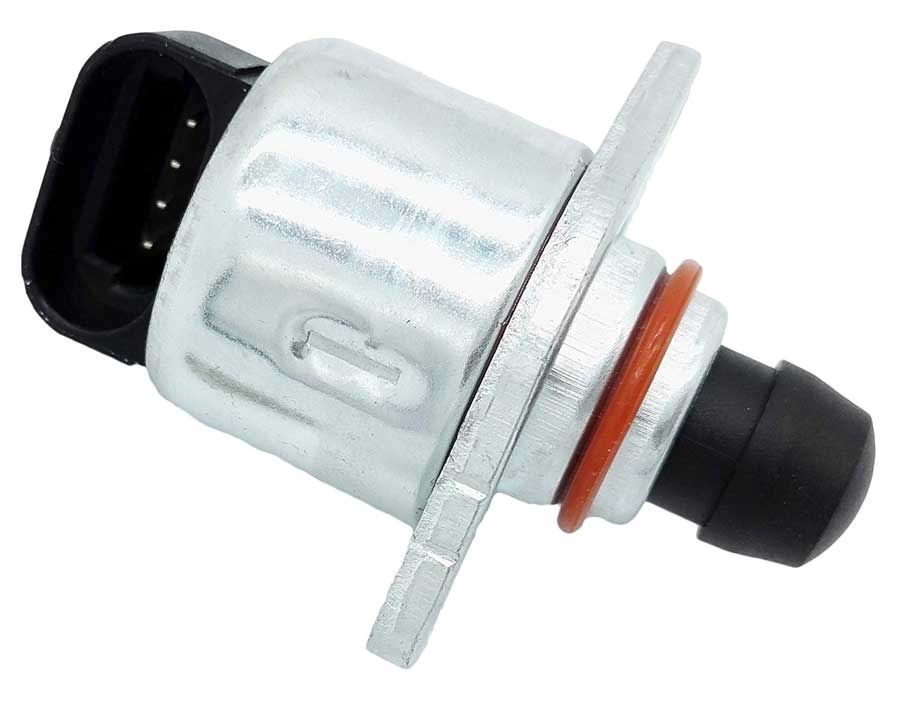 In 2018 I began working on a stand-alone manually adjustable idle control valve for my car using a GM stepper IAC motor. Click the above images or below link to see it. https://www.240turbo.com/idleaircontrol.html
|
240 Interior Renewal Project
 THIS NEEDED TO BE SHARED. This discussion thread below began in May 2018 and it's a goldmine for inspiration on making your old 240 interior look brand new again. It's a great resource for information on paints and interior parts too, so I had to share it here for those of you who haven't seen it. turbobricks.com/interior-refreshening-project.342177/
|
240 Door Panel Project
 THIS NEEDED TO BE SAVED and SHARED. This 240 Door Cards from Scratch thread was shared in TB in December 2018. If you're patient and handy, it shows some great ideas for you to completely remake new 240 door cards to replace the old, warped or rotten ones in your 240. turbobricks.comdoor-cards-from-scratch.346785 UPDATE 2023: The above thread now has a lot of broken images. Luckily I saved a PDF of the original thread with all images, which should help if you're doing a project like this. https://www.davebarton.com/pdf/242doorcardbuildlo.pdf If you need to replace or re-create new plastic moisture barriers, lots of people have suggested using shower curtain plastic. turbobricks.com/door-card-backside-plastic.364707
|
240 Exterior Paint Renewal Project
  This discussion thread below began in 2015 and outlines a 245 owner who went the distance in restoring his newly acquired 245 exterior paint to look exceptionally nice. His efforts paid off. It's a great inspiration to 240 lovers. turbobricks.com/my-240-story.305369
|
Custom Yoshifab Turbo Oil Drain Hose for Volvo Turbo Red Blocks
|
Yoshifab Catch Can (breather box) Installation
|
Volvo Red Block OIL COOLER Information
| This information may come in handy when
working on oil cooler systems on red blocks. I compiled a new web page just for this info. https://www.240turbo.com/oilcooler.html  |
Oil Cooler Thermostats
| The factory oil cooler thermostat in my
240 Turbo oil filter plate seemed to have stopped
working. My guess is it was stuck in the wide
open position, since it was taking forever for the
engine oil to come up to temperature. So I
decided to add an IN-LINE oil cooler thermostat in the
lines between the engine and the oil cooler. You can find that info here: https://www.240turbo.com/oilcooler.html 
|
Removing or Replacing 240 Door Top Black Vinyl Trim
|
I gets lots of questions about doing this kind of work
or where someone can buy these black vinyl trim
pieces. They have not been available for a lot of years from Volvo or any other source, but if you're persistent, good results are possible. If you want new black vinyl for your 240, contact me. I can supply the new stripes you'll need. CLICK HERE: https://www.prancingmoose.com/doorvinyl.html
|
Electric/Hydraulic or Electric Power Assist Steering
|
If you like
having power steering, but for some reason the
traditional hydraulic setup isn't quite right
for your modified Volvo (or if you want to
convert an older manual steering Volvo to
power assist) here are some possible answers.
A number of years ago, Josh Sadler of Yoshifab converted his Volvo 242 to electric/hydraulic steering. Josh's system was fairly simple. It used the original Volvo power steering rack. He mounted an electric/hydraulic steering pump and reservoir from a Toyota MR2 in his trunk and had hydraulic hoses made to route all the way to the stock steering rack. The result worked pretty well. Here's a discussion thread on his installation: https://turbobricks.com/index.php?threads/electric-power-steering.135556/ See his YouTube video below. https://www.youtube.com/watch?v=iItsdzTMp9I
https://turbobricks.com/index.php?threads/electric-power-steering-2-series.247548/ Or here's a video below about someone who used a VOLVO electric/hydraulic steering pump to feed the power steering. He didn't install it in a Volvo, but this pump/reservoir is from approximately 2004-2013 Volvo C30, C70, S40, V50 variants. The pump/reservoir is Volvo PN 36050678.
It's a great question. It certainly appears you CAN. Several racing hose makers offer DIY hose and ends. And this video discussion using a Volvo electric/hydraulic pump to convert a Camaro. This video has a lot of detail and discusses using a DIY Arduino controller to regulate the pump so it's not just running at one speed all the time. Lots of really good info here. https://www.youtube.com/watch?v=FGHd-mirPdE Russell PowerFlex hose is advertised with a rating of 2500 PSI. https://www.jegs.com/p/Russell/Russell-PowerFlex Earls power steering hose is rated at 3000 PSI. https://www.holley.com/brands/earls/products/plumbing https://www.youtube.com/watch?v=M2wXKfOmvF0
And here's the next generation steering mod. Steering Column EPAS. Electric Power Assist Steering (EPAS) Units from a Saturn Vue, Chevrolet Equinox or Pontiac Torrent and other modern cars. The EPAS is mounted in the steering column, so the level of tech is much higher. See discussion threads here: turbobricks.com/epas-in-p1800.341174/ turbobricks.com/pump-on-a-740-t6.361224/ More info: VOLVO 240 Specific: turbobricks.com/electric-power-assist-steering.334886/ www.therangerstation.com/electric-power-steering/ www.hotrod.com/electric-power-steering/ www.super7thheaven.co.uk/epas/ forums.corral.net/electric-power-steering |
Identifying a Power Steering Rack in your 240
|
Classic Car Insurance for your Classic Volvo
Classic Auto Air all new Air Conditioning Installation
|
I finally grew tired
enough of my mediocre Volvo AC in my 242 to explore an
extreme
option. This is a complete new AC system installation from
Classic Auto Air. I also spent the time
installing Dynamat
while the interior was out of the car. It was a
LOT of work, but overall a good project. I created a new web page all about the new AC conversion. CLICK HERE!
|
Dealing with a Cracked 240 Dash
Here are some VIDEOS:
#1 Unboxing and trying out. https://www.youtube.com/watch?v=_HO1LqFtFig #2 Installation. https://www.youtube.com/watch?v=ksmMu0wwhuY&t=2s Other threads to read:
|
Installing Rear Wheel Spacers - for Wider Track
|
Wider Rear Wheel/Tire FENDER CLEARANCE for your 240
 This pic above was the final result of my 242 after I completed the above inner fender trimming. There is zero rubbing, even when bottoming out the suspension. For more info on how I installed these wheels using custom adapter (Volvo to BMW bolt pattern), go to https://www.240turbo.com/index.html#bmw5x108. |
Calculating Correct Wheel Offset for your 240
When I was shopping for wheels to replace the Eikers, I knew I would need to concentrate on something with more offset than the Eikers, since I would need the extra room to add an adapter behind each wheel. I eventually settled on wheels that were 7.5 inches wide with 35 mm POSITIVE offset.
The adapter maker I
chose was www.motorsport-tech.com/.
The minimum thickness they will make is 15 to 20 mm. I went with a 20 mm thick front adapter. Now draw yourself some
diagrams if it helps you visualize all
this.
Here's a good Turbobricks discussion thread with related info: turbobricks.com/corvette-sawblade-spacer-adapter-thickness-240.339645 Turbobricks Wheel Guide: turbobricks.com/factory-wheel-guide.72501
HUB-CENTRIC versus LUG-CENTRIC It's important to decide if you will be using a spacer or adapter that is either HUB-CENTRIC or LUG-CENTRIC. Hub-Centric means that the center raised lip that fits into the wheel center is present and will keep the wheel centered before you lighten the lugs. It means that the weight of the car is supported by the hub. Lug-Centric mean no center lip is present and the wheel must be centered using the lugs. It means that the weight of the car is supported by the lugs. There are many generic spacers on line that are Lug-Centric. Here's a TB discussion for you: turbobricks.com/lug-centric-wheel-adapters.349054 
|
Momo Steering Wheel Hub for the 240
Installing a Momo
(or similar type) steering wheel in your 240 can
really improve your driving experience. It
gives you lots of options for choosing a stylish
or sporty steering wheel in a variety of
sizes.
You probably already know all this and luckily for you, that's NOT what this article is about.
|
240 V Belt Sizes
 Information on factory 240 accessory V belt sizes used to be easier to find, but it seems to have mostly disappeared from many useful sites. I put this info together many years ago for my own 240 uses. I thought I would share it here. Here's a PDF printable version of the below table: davebarton.com/240V-Belts.pdf
|
1975-85 240 Headlight Switch Plug MELTING Problems
|
Getting a Super Bright 240 Dome Light
MORE VOLVO BULB REFERENCES Matthews Volvo Site Bulb Guide: www.matthewsvolvosite.com/forums/61483 Other 240 interior and exterior bulb info in this Turbobricks thread: turbobricks.com/240-led-dash-light-qs.283706 iPd Bulb Reference: ipdusa.com/techtips/what-light-bulbs-fit-my-volvo Volvo has owner's manuals going back many years (bulb info is in "Specifications"): www.volvocars.com/owners-manuals |
Gentex Rear View Mirror Upgrade
|
Adding a more modern mirror for
your 240 on the CHEAP. with Auto Dimming, Compass and Outside Temperature.
|
Guide for Crimping Terminals
I've put together a page with instructions
for crimping and assembling typical open barrel or
EFI crimp terminals and connector housings.
|
Hydraulic Clutch Info Page for your 240
| I have
a pretty heavy clutch in my 240. Back in 2011 I got
tired of stretching, adjusting, stretching and then
snapping clutch cables, so I installed a hydraulic
setup for the clutch. I recently updated the
master cylinder from the Volvo unit to an aftermarket
one and created a web page to help keep track of the
parts and information for others to see. Here's the new page below: https://www.240turbo.com/hydraulicclutch.html 
|
Mounting Driving Lights on your 240 without Drilling your Bumper!
|
Making a Custom Cup Holder for your 240
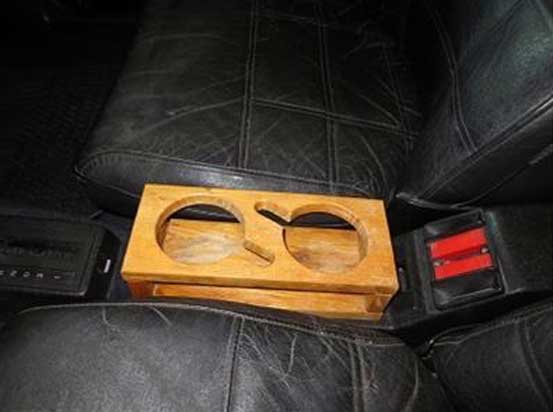
We all know our beloved 240s never came with cup holders. There have been a number of cup holder projects in the internet over the years. When I saw this one in the Turbobricks forum, I felt it really needed to be shown. The thoughtful design allows it to be securely anchored over the e-brake handle, using the e-brake handle button to help pin the front against the shifter hump. It's a nice design feature to keep in mind when you build (or adapt) such a thing for your car. See more photos and dimensions here: turbobricks.com/custom-wooden-cupholder.328054 And new for 2021, here's something new and ingenious for an early 240 (1975-1980). They say they are also working on something for later 240s.
|
Installing a G80 Locking Differential (from a 700/900) into your 240
|
Fixing Common Corroded Ground Points (and power connections) In Your 240
I hear about strange intermittent electrical
problems from frustrated 240 owners quite often. These
problems occur so often because of a few good reasons
. . . .
|
Hardwiring your 240 Taillights
|
Lowering Your 240
|
Should
you change the ride height of your 240? How? 240 SUSPENSION PAGE Click: 240turbo.com/suspension.html |
Installing a Later Windshield in an early Volvo 240 or 140
|
Build a Badass HEADLIGHT RELAY HARNESS
| This
is a good project for anyone with any older Volvo,
especially if you have or want to to upgrade to
brighter bulbs or headlights. Find this info in my Headlight Relay Page: 240turbo.com/headlightrelay.html#relayharness 
|
Unlocking the Mysteries of the 240 Headlight Step Relay
And Test Procedures
| This
relay is rather special in that it has a LATCHING
function. A latching function is where you can
click and release a momentary button or switch (such
as a high/low beam stalk) and the relay will LATCH
(or lock) in the ON or OFF position until the switch
or stalk is clicked again. For this Volvo relay, one
click latches it "ON" and another click latches it
"OFF." I have created the diagram PDF
for anyone who wants to better understand how these
relays work.
I have also added a test procedure on page 2 if you think you might have a broken one. 240turbo.com/headlightrelay.html 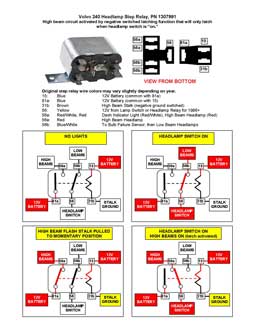 |
How to Substitute Available Relays
to ELIMINATE your Volvo 240 Headlight Step Relay
|
240 Electric Speedometer Custom Re-Calibration
|
|
Understanding and Dealing with a Volvo Bulb Failure Sensor
Better and Faster Wipers
|
|
Understanding Relay Functions and Uses
 I'm putting this here
because having an
understanding of simple relay functions can
help any DIY Volvo mechanic in so many places for your
car projects. Many of the suggestions in this 240
modification page rely on relays. Not too many
years ago my relay knowledge was limited to installing a
pair of fogs lights. The internet has helped a lot
in this area and most of you can now be really
successful with relays. I'm putting this here
because having an
understanding of simple relay functions can
help any DIY Volvo mechanic in so many places for your
car projects. Many of the suggestions in this 240
modification page rely on relays. Not too many
years ago my relay knowledge was limited to installing a
pair of fogs lights. The internet has helped a lot
in this area and most of you can now be really
successful with relays. This Relay Guide is not Volvo specific, but it's a great resource for expanding your general auto relay knowlege and offers some interesting diagrams. https://www.davebarton.com/pdf/RelayGuide.pdf (3.3mb PDF) Here are some other pages with more relay explanations and configurations: http://www.the12volt.com/relays/page5.asp http://www.12voltplanet.co.uk/relay-guide.html danielsternlighting.com/relays.html <<< And this is the best site I know for improving your auto lighting with added relays. If you know of any other useful resources that would be a good fit here, please email me. |
3-FLASH "Komfort Blinker" UPGRADE for your Volvo.
|
240 M46 Overdrive Wire Harness Design, Construction, Mods
|
Creating an M46 OD Relay Function using Ordinary Relays
An M46 overdrive relay might get
hard to find or expensive. If you need to create a circuit that
replicates an M46 overdrive relay, you can use this below. This uses four standard SPDT
(Single Pole Double Throw) relays and a couple diodes. This type of relay will have center
pin 87A. The momentary push button connects to ground and when pushed it
will activate power to the 12V output, which can be connected to your
OD solenoid. Another momentary push will deactivate it. Turning off the
power (shutting off the car) will deactivate it also. For the 12V power
to light your OD lamp in the dash, you can use power from the 12V
output.  |
240 Auto Transmission Overdrive Wire Harness Design and Construction
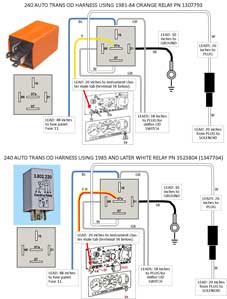 Since I made the above M46
diagrams I thought it would be good to illustrate how
the 240 auto trans ORANGE
and WHITE overdrive relays work too. There is
almost no difference in the relay circuits between the ORANGE and WHITE relays. They are
essentially interchangeable, EXCEPT that the OD
light on the dash seems to come on opposite of when it's
supposed to when the incorrect relay is installed. Since I made the above M46
diagrams I thought it would be good to illustrate how
the 240 auto trans ORANGE
and WHITE overdrive relays work too. There is
almost no difference in the relay circuits between the ORANGE and WHITE relays. They are
essentially interchangeable, EXCEPT that the OD
light on the dash seems to come on opposite of when it's
supposed to when the incorrect relay is installed. |
Shifter Knob Fix (M46 or M47) Manual Transmission
|
Upgrade the In-Tank Fuel Pump in your 240 with a Larger 740 Turbo Pump
The 740 Turbo pump I used for
this conversion, which was used in 1986 and later 700 and 900 Turbo models (and 960), is PN
3517845.
CLICK HERE TO FIND THIS PAGE 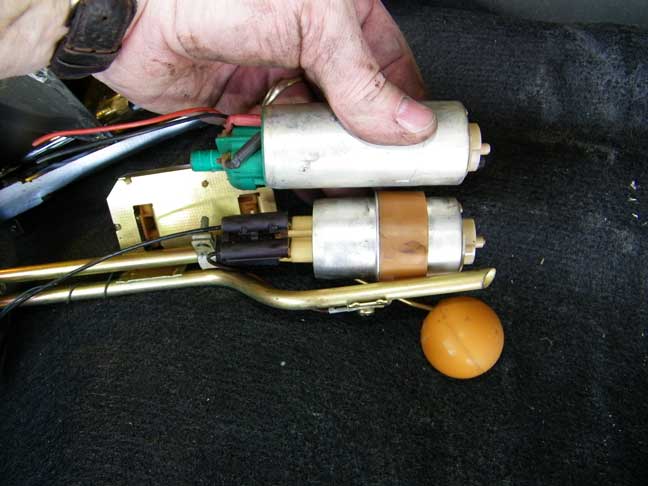
|
Adding a Large Tachometer to your Volvo 240 in place of the Large Clock
Plastic Fuel Line Repairs
 Volvo used semi-rigid plastic fuel lines on all 200, 700 and 900 series. Maybe more models, but I'll deal mainly with cars made in the 1980s and 1990s for this article below. Special thanks goes to Roger Brown of Pueblo, Colorado for the photos and details from his own fuel line repair. The photos below are of 740 fuel lines, but the principle is the same for 240s. You'll find that the plastic hoses used in these cars are fitted to fairly standard brass or steel barbed nipples. Volvo fitted them when the hose or nipple or both are heated to a point the plastic becomes more flexible. Removing these hoses from existing nipples can be difficult and you may find that cutting or slitting them at the barb is the best treatment. HERE'S AN VIDEO THAT MAY HELP. https://www.youtube.com/watch?v=4xK0m4jvC84 If you need a source for METRIC plastic fuel line hose, Belmetric sells it by the foot. belmetric.com/cohline-series-3100-polyamide-hard-plastic-hose
|
Adding a Small 52 mm VDO/Volvo Tachometer to your 240
Fixing Bad 240 Driver Door Lock or Switch Wires
| I
have seen a fair number of emails like this one: "I own a 1993 Volvo 240 Sedan. It has about 100,000 on it and runs beautifully. The only problem is that the central locking system seems to be malfunctioning. It makes a fast clicking sound when driving and sometimes goes up and down when one tries to unlock the other doors from the drivers side. In the past two days the battery died due to something being left on. I pulled the #8 fuse (courtesy lights, clock, trunk light, glove box light, central lock system, power antenna, radio) and today the battery was fine." This is an extremely common problem that literally affects ALL YEAR 240s equipped with CENTRAL DOOR LOCKING. How do I know this problem is common in all year 240s? Because when I discovered this years ago i spent time at junkyards pulling off door panels on a lot of 240s up to the 1993 model year. They are all the same. All had BAD WIRES!  
The problem is old, flaking wire insulation inside the
driver door. Specifically, the wires going to the key lock switch ("F"
in the diagram shown at left) and also the door lock plunger switch
("A" in the diagram shown at left). It should be
pretty obvious once you pull off your door panel and
look closely at these wires. The insulation on these
wires will crumble and fall off, allowing the wires to
short. This causes the rapid lock-unlock to occur
randomly. And when the car is parked, the shorted wires
may allow the locks be stuck in UP or DOWN mode, which can drain your
battery in a few hours. The solution is
to cover the bad wires with heat-shrink tubing, liquid
electrical tape, etc., or cut them out and crimp or solder in new
wires. You will probably only have to do this to
about 8 inches of wires, but keep an eye out for
more than that.
Here are a couple good threads with more photos: turbobricks.com/central-locking-switch-deterioration.323301 turbobricks.com/auto-lock-on-245-wire-problem-fix.322700 |
Dealing with the Temperature Compensation Board in your 1986-93 240
|
| davebarton.com |
prancingmoose.com |
240turbo.com |
Special Emblems |
| Prancing
Moose Stickers |
Volvo
Stickers |
Body/Chassis/Engine
Labels |
240 MODS and FIXES Page |
| Other Car Brand
Stickers |
Steering
Wheel Labels |
Center Cap Labels/Overlays |
Cool Volvo
Products |
| Grill Labels/Overlays |
Volvo Wire
Harnesses |
Conversion Harnesses |
Harness
Parts/Connectors |
| Volvo Relays |
Coil Repair
Harnesses |
240 Window
Scrapers |
740/940
Window Scrapers |
| Adjustable Voltage
Regulators |
Horn Buttons |
240 Odometer
Repair |
740 Odometer
Repair |
| Volvo Gauge
Faces |
740
Turbo/Boost Faces |
240 Black Door Vinyl |
850 Odometer
Repair |
| ALTERNATOR Page |
240 Power Mirrors - Switches |
240 Oil Cooler Page |
240 Fuse Panel Page |
| Group A
Racing 242 Turbo Page |
240 Hydraulic Clutch | Fuel Pump RELAY Page |
240 Headlight RELAY Page |
| Used Parts & Extra Stuff for sale |
CRIMPING Page |
240 Ignition Page |
240 Headlight Page |
| 240 Gauge Electrical Diagrams | 240 REAR END Page | Yoshifab Catch Can Install | 240 TAILLIGHT Page |
| Side Marker
Lights Page |
Gentex Mirror Upgrade | Yoshifab Drain Tube Install | Modified 240 Favorites |
| SoCal Salvage Yards | Unleaded Racing Fuel | B26FT Stroker | Dave's 245 Spec Page |
| 240 SUSPENSION Page | 240 Lowering Page |
240 Windshield Page |
240 WIPER Page |
| 240 BRAKES Page |
240 Dash Top Gauge Pod | Cadillac 4-Note Horn Install | 240 DYNAMAT Installation |
| 4 Speed Fan
Controller |
Electric Cooling Fan
Page |
BRUSHLESS Cooling Fan Page |
Tropical Fan
Clutches |
| 240 AC Page | "KOMFORT BLINKER" Upgrade | T5 Trans Conversion Page | 240 Engine Mount Page |
| 240 VIN Page | Stepper Idle Valve Page |
Vacuum Diagrams | 240 HOOD Page |
| 240 Exhaust Page | 242 Power Vent Window Project |
EFI Volvo Pin Function Diagrams |
Favorite Links |
| R-Sport
Apparel |
Prancing
Moose Apparel |
Volvo Meet Photo Albums | Texas Volvo Meets and Events |
| Ordering Instructions | Policies | PAYMENTS Page |
Mojave Road Trail Map Page |
| Returns | Shipping | Shopping Cart Troubleshooting | Contact Us |









